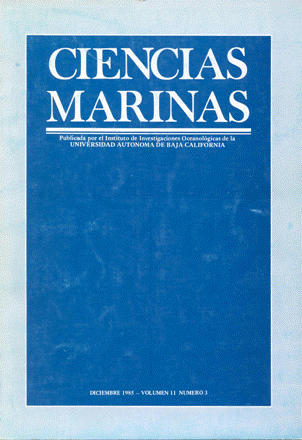Analysis of mortality and expectation of life of Acartia californiensis Trinast (Calanoid:Copepod) under laboratory conditions
Main Article Content
Abstract
In order to analyze mortality and expectation of life of the calanoid copepod Acartia californiensis Trinast during its life cycle an experiment was carried out under laboratory conditions (17ºC + 1ºC and 35‰). Eggs from adults collected in Estero de Punta Banda, Baja California, Mexico, were obtained and cultured until the adult stage. They were fed with microalgae Tetraselmis sp. and Isochrysis tahitiana. During the development of the organisms, the maximum mortality rate was observed in the naupliar stages. Based on a horizontal stage-specific life table, the mean expectation of life or further life for animals alive in the population showed the highest rates for the nauplii-I to nauplii-VI stages (3.98 days ± 0.61 SD); the lowest rates were recorded for the copepodid stages (2.26 days ± 1.05 SD). According to a horizontal age specific life table, during the first ten days of life of an organism, survival and expectation of life were of 0.67 ± 0.24 SD and 6.45 days ±0.82 SD, respectively. On the other hand, these rates decreased up to 0.183 ± 0.13 SD for survival, and 2.30 days ±1.32 SD for expectation of life during the last days of the experiment. The differences between the results of each type of table are probably due to the integration effect on the horizontal stage-specific table. Variations of mortality and expectation of life are probably due to the kind of food and the metabolism variations of the organism by stage. This study supplements the information on development of the life cycle and reproductive biology of A. californiensis, dominant zooplankton in the estuary zones of the northeastern Pacific.
Downloads
Article Details
This is an open access article distributed under a Creative Commons Attribution 4.0 License, which allows you to share and adapt the work, as long as you give appropriate credit to the original author(s) and the source, provide a link to the Creative Commons license, and indicate if changes were made. Figures, tables and other elements in the article are included in the article’s CC BY 4.0 license, unless otherwise indicated. The journal title is protected by copyrights and not subject to this license. Full license deed can be viewed here.

